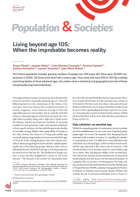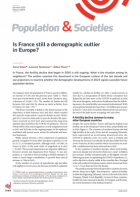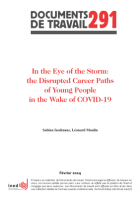
Principes et formules du calcul des probabilités pour assigner les limites des variations des évènements naturels (1813)
Collection : Classiques de l’Économie et de la population
2010, 448 pages- Avant-propos
- Duvillard et la mathématique sociale par Luca Dell'Aglio et Giorgio Israel
- Sur la confection des tables de mortalité
- Expression de la Loi de mortalité
- Théorie et principales formules de l'analyse des hazards employées dans cet ouvrage
- Applications de la Théorie des hazards et des Formules aux différens mouvemens de la Population en France
- Des Forces vitales et des Forces destructives des individus et des générations
- Effet de la Loi de mortalité sur les mariages
- Extrait du memoire de Tramblay (ac. de Berlin 1796, p. 17)
- Références bibliographiques
Emmanuel-Étienne Duvillard de Durand (1755-1832) was known for his actuarial activities and for the construction of life tables, but his contribution to the analysis of social mathematics and the mathematical modelling of mortality long went unrecognized. His attempts to enter the prestigious Académie des Sciences and his ambition to add a probabilistic dimension to population statistics confirm that he was not only a brilliant mathematician, but also a scholar in the noblest sense of the term, to whom this book pays tribute.
This book is a treatise on the «principles and formulae of probability calculation to define the limits of variation in naturale vents» and represents the culmination of his research, recognized in his time by scholars such as Lagrange,Legendre et Laplace, but later condemned to oblivion by the vicissitudes of history and a veritable conspiracy of silence.
Duvillard’s previously unpublished work, transcribed and edited for the first time in this book, was writtenin 1813. Picking up on ideas set forth by the mathematician Jean-Henri Lambert in that same year, he examines mortality with a view to constructing an equation to describe the progressive extinction of a human generation.
His work thus represents a turning point in the study of demographic phenomena and a first attempt to apply principles of probability calculation to population science. This is a truly pioneering text which aims to provide an exact evaluation of the limits to be defined when estimating the size of a population.
The editors of this treatise – Giorgio Israel, who first uncovered these unpublished archives, and Luca Dell’Aglio – have accomplished a considerable feat, patiently deciphered, dissected and transcribed this handwritten text and authored an accompanying essay which places the document in its historical and scientific context.
Their work is a historical tribute, aiming to render justice to a man of exceptional qualities by acknowledging his role in the history of science.
read the focus on "Duvillard: an important contributor to social mathematics"







